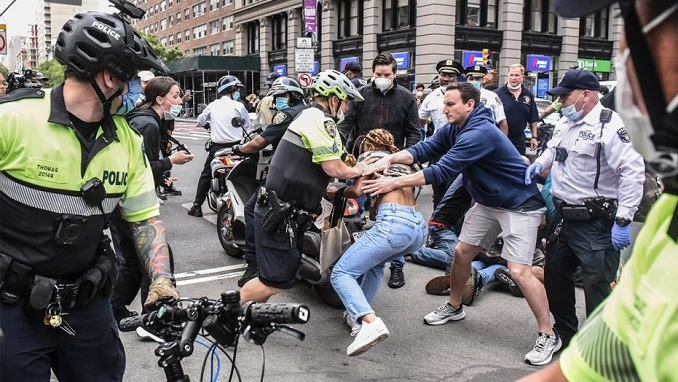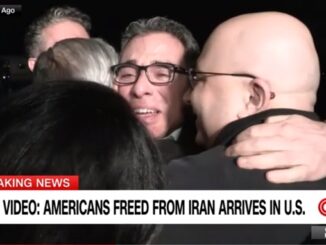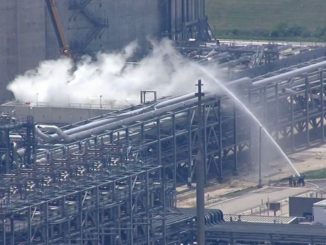
Many of the protests broke out in places across the country where the virus is still circulating widely in the population – and an Associated Press review found that demonstrations have taken place in every one of the 25 U.S. communities with the highest concentrations of new cases.
Some have seen major protests over multiple days, including Minneapolis-St. Paul, Chicago, Washington, D.C., and Los Angeles, AP writes.
The protests have come just as communities across the nation loosen restrictions on businesses and public life that have helped slow the spread of the virus, deepening concern that the two factors taken together could create a national resurgence in cases.
“As a nation, we have to be concerned about a rebound,” Washington Mayor Muriel Bowser warned Sunday after days of protests rocked the nation’s capital. New York Gov. Andrew Cuomo bemoaned the crowds, saying that hundreds could potentially have been infected, undoing months of social distancing.
A fresh outbreak in the places where protesters gathered could lead to reinstituting shutdowns.
The AP’s review focused on large metro counties — the central counties within metro areas with more than 1 million people — that showed the highest rates of new cases per capita over the past 14 days.
While case numbers and deaths have been trending down in several of the cities where the largest protests have occurred, the number of people in those places infected with the virus — and with the ability to spread it — remains high. And in some of the communities, such as Minneapolis, the number of people hospitalized with COVID-19 has been rising.
Floyd died May 25 after a Minneapolis police officer pressed a knee into his neck for several minutes, even as he pleaded that he couldn’t breathe. Minneapolis has been ground zero for the sprawling protests, which have crossed the Mississippi River into neighboring St. Paul.
The unrest has coincided with “the very worst days of the pandemic so far” in the Twin Cities metropolitan area, said Michael T. Osterholm, director of the Center for Infectious Disease Research and Policy at the University of Minnesota. “Our ICU bed care is at its all-time high and is really on the edge,” he said.
Ramsey and Hennepin counties, home to the Twin Cities, ranked seventh and eighth for the highest per capita new cases in the AP analysis. Each has seen more than 250 cases per 100,000 population in the past two weeks, together reporting nearly 2,000 new cases in the last week alone.
Crowding protesters who have been arrested into jail cells can also increase the risk of contagion. An AP tally found that, thus far, more than 5,600 people have been taken into custody.
Protesters and police shouting at one another nose-to-nose also is raising alarms.
Osterholm and other public health experts note, however, that the protests aren’t necessarily as alarming as other events that could fuel new cases because they take place outside and many people are wearing masks. In some cases, hand sanitizer also is being informally distributed, AP notes.
Public health experts said it will take two to three weeks to know whether the protests cause a surge in coronavirus cases. And even then, they can’t definitively tie it to the demonstrations.
The unrest is happening in tandem with the reopening of gyms, hair salons, restaurants, parks and beaches. It also comes on the heels of the Memorial Day weekend, when many people attended large gatherings, so experts already were bracing for a case increase, said Jennifer Nuzzo, an epidemiologist at Johns Hopkins University.
In Los Angeles, barbershops and in-person dining were allowed to resume last weekend, just as protests descended into destruction and more than 1,000 people were arrested. Nearly 10,000 new cases have been reported in Los Angeles County in the past week.
Hundreds of people also were arrested in Chicago, where Cook County has had among the highest per capita rates of new cases of any large county in the nation, with 283 new cases per 100,000 population in the past two weeks.




Be the first to comment